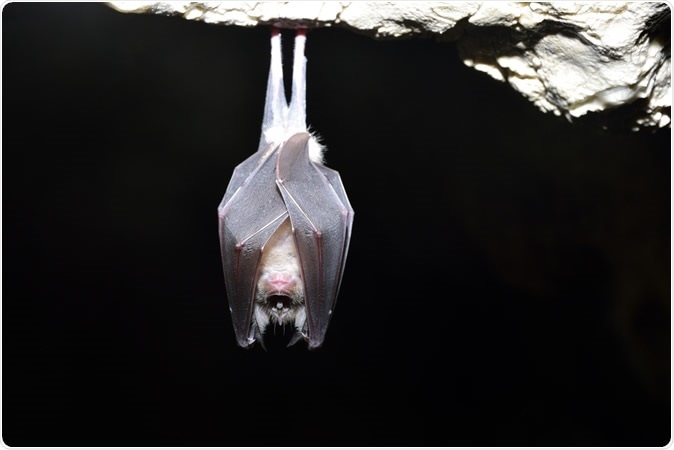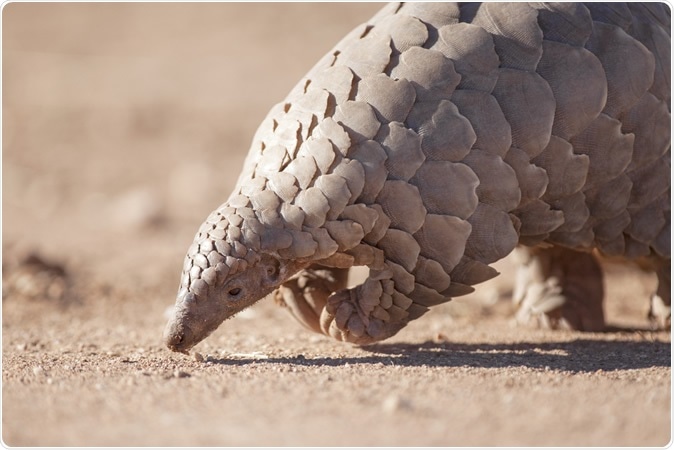Researchers have found that genetic selection and recombination could be behind the emergence of the severe acute respiratory syndrome coronavirus 2 (SARS-CoV-2) that leads to acute respiratory distress syndrome (ARDS) or COVID-19 disease. This research could explain COVID-19 pandemic and its emergence. The study titled, “Emergence of SARS-CoV-2 through recombination and strong purifying selection,” was published in the journal Science Advances.
.jpg)
Illustration of SARS-CoV-2, 2019 nCoV virusImage Credit: Orpheus FX / Shutterstock O By
The COVID-19 pandemic and its origin
The first case of COVID-19 was detected in late December 2019 in Wuhan, China. The infection has brought the economy of the world to a staggering halt, and recovery is still some distance away feel experts. The disease was declared a pandemic officially on the 11th of March 2020 by the World Health Organization (WHO). To date, it has infected over 6.26 million individuals killing over 375,000 across the world.
The virus behind the pandemic is the severe acute respiratory syndrome coronavirus 2 (SARS-CoV-2). Researchers wrote that this virus is a “new member of the genus Betacoronavirus.” It is a group of coronaviruses that have been isolated from bats. They explained that these were genetically different from the betacoronaviruses that were responsible for the earlier outbreaks of respiratory diseases such as SARS and MERS among humans.

Greater horseshoe bat (Rhinolophus ferrumequinum). Image Credit: ATTILA Barsan / Shutterstock
What was this study about?
The team explains that the SARS-CoV-2 has a 96.3 percent genetic similarity with CoV RaTG13, which was collected from a sample in a bat in Yunnan in 2013. SARS-CoV-2 also has close similarity genetically with the coronaviruses found in Malayan pangolins. This has been reported in two different studies so far. The pangolin coronaviruses called the Pan_SL-CoV, are two different clades that come from two origins, they wrote. The first clade was called Pan_SL-CoV_GD and came from Guangdong (GD) province in China. It has a 91.2 percent genetic similarity with the SARS CoV-2 virus. The second clade is the Pan_SL-CoV_GX that was collected from samples in the Guangxi (GX) province. This had an 85.4 percent genetic similarity with the SARS CoV-2 virus.

A Pangolin. Image Credit: 2630ben / Shutterstock
The purpose of this study was to understand the origin of this new virus so as to help plan preventive measures to stop the transmission of the virus from animals to humans in the future. Viruses similar to SARS and MERS were also found among domestic camels and civets, they wrote.
The authors of the study explain that recombination is an essential method by which the coronaviruses evolve. In this study, the team conducted a genomic analysis to see the evolutionary recombination patterns that led to the formation of this virus and the selection process that led to the distinctive features of this virus by allowing it to choose a distinctive host and allow its animal to human transmission.
What was done?
For this study, the team obtained complete genetic sequences of 43 coronaviruses from the GenBank and GISAID (Global Initiative on Sharing All Influenza Data). They used SimPlot 3.5.15 to identify the potential recombinant regions of the genes, and sequences were chalked out. In the genetic code, they looked for “insertions and deletions (indels), synonymous (syn), and nonsynonymous (nonsyn) mutations” and also nucleotide substitutions that took place.
As a next step, they looked at a single mutation called the Q498H between SARS-CoV-2 and Pan_SL-CoV_GD. Structural modeling was employed. They also studied the effects of the removal of two residues on the attachment of the virus with the human angiotensin-converting enzyme 2 (ACE2) receptor.
What was found?
The study revealed that there was a strongly “purifying selection” in the present form of the SARS-CoV-2. The selection has been noted in the receptor-binding motif (RBM) in the viruses found in bat, pangolin, and human coronaviruses. The team states that this showed “similar evolutionary constraints in different host species.” The study showed that the whole RBM of the SARS-CoV-2 came from the process of recombination with coronaviruses that came from pangolins. This could have been a critical step in the evolution of the virus.
Conclusions and implications
The researchers said that it is vital to understand the evolutionary process of the virus because it could prevent future animal to human transmissions, pandemics and also help develop drugs and vaccines to treat and prevent these infections.
They wrote, “Similar purifying selection in different host species, together with frequent recombination among coronaviruses, suggests a common evolutionary mechanism that could lead to new emerging human coronaviruses.”
The researchers said that the proximity of the animals of different species in the wet markets could be one of the reasons for this cross-species spillover of the viruses and their recombination. This could be the reason behind “recombination between more distant coronaviruses and the emergence of recombinants with novel phenotypes,” they wrote.
They concluded, “While the direct reservoir of SARS-CoV-2 is still being sought, one thing is clear: reducing or eliminating direct human contact with wild animals is critical to preventing new coronavirus zoonosis in the future.”
Journal reference:
- Emergence of SARS-CoV-2 through recombination and strong purifying selection, Xiaojun Li1, Elena E. Giorgi, Manukumar Honnayakanahalli Marichannegowda, Brian Foley, Chuan Xiao, Xiang-Peng Kong, Yue Chen, S. Gnanakaran, Bette Korber and Feng Gao, Science Advances 29 May 2020: eabb9153, DOI: 10.1126/sciadv.abb9153, https://advances.sciencemag.org/content/early/2020/05/28/sciadv.abb9153